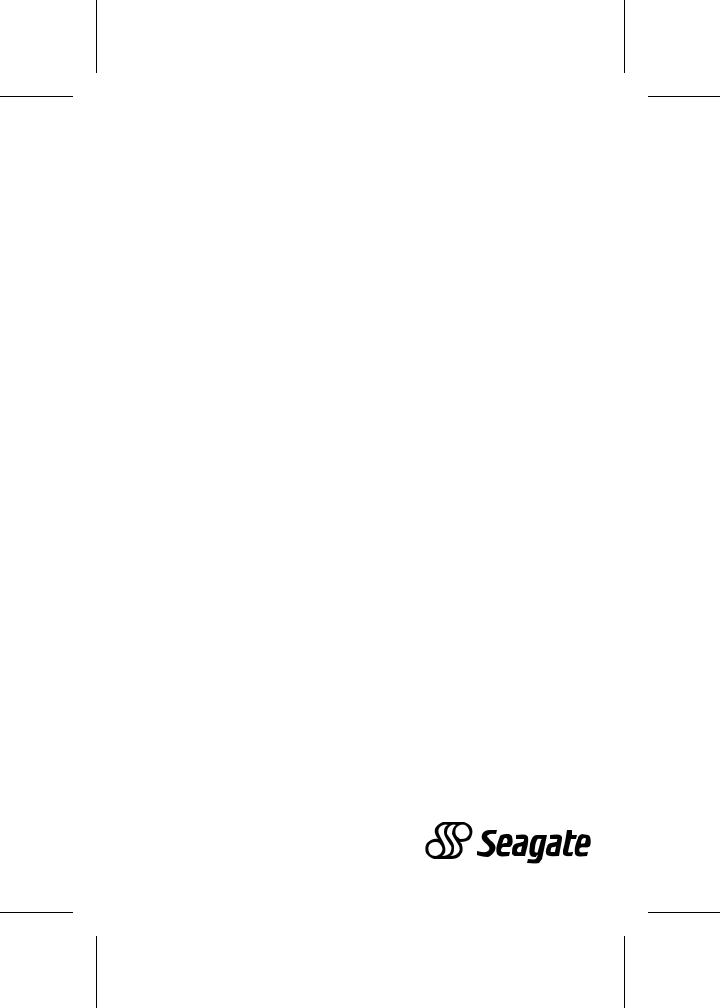seagate ST3655A, ST3550A, ST3390A Product Manual

. . . . . . . . . . . . . . . . . . . . . . . . . . . . . . . . . . . . .
ST3655 Family:
. . . . . . . . . . . . . . . . . . . . . . . . . . . . . . . . . . . . .
ST3390A, ST3550A, ST3655A
. . . . . . . . . . . . . . . . . . . . . . . . . . . . . . . . . . . . .
AT Interface Drives
. . . . . . . . . . . . . . . . . . . . . . . . . . . . . . . . . . . . .
. . . . . . . . . . . . . . . . . . . . . . . . . . . . . . . . . . . . .
Product Manual
. . . . . . . . . . . . . . . . . . . . . . . . . . . . . . . . . . . . .


. . . . . . . . . . . . . . . . . . . . . . . . . . . . . . . . . . . . .
ST3655 Family:
. . . . . . . . . . . . . . . . . . . . . . . . . . . . . . . . . . . . .
ST3390A, ST3550A, ST3655A
. . . . . . . . . . . . . . . . . . . . . . . . . . . . . . . . . . . . .
AT Interface Drives
. . . . . . . . . . . . . . . . . . . . . . . . . . . . . . . . . . . . .
. . . . . . . . . . . . . . . . . . . . . . . . . . . . . . . . . . . . .
Product Manual
. . . . . . . . . . . . . . . . . . . . . . . . . . . . . . . . . . . . .

© 1993 Seagate Technology, Inc. All rights reserved Publication Number: 36244-003, Rev. A
23 December 1993
Seagate®, Seagate Technology® and the Seagate logo are registered trademarks of Seagate Technology, Inc. Other product names are trademarks or registered trademarks of their owners.
Seagate reserves the right to change, without notice, product offerings or specifications. No part of this publication may be reproduced in any form without written permission from Seagate Technology, Inc.

ST3655 Family AT Drives Product Manual, Rev. A iii
Contents
1.0 Specifications . . . |
. . |
. . |
. . . . . . . . . . . . . . |
. . |
. . |
. |
1 |
1.1 Formatted capacity |
. |
. . |
. . . . . . . . . . . . . . |
. . |
. . |
. |
1 |
1.1.1Recommended logical configuration . . . . . . . . . . . 1
1.1.2Physical organization . . . . . . . . . . . . . . . . . . . 2
1.2 |
Functional specifications |
. . . . . . . . . . . . . . |
. . |
. . |
. |
2 |
1.3 |
Seek time . . . . . . . . |
. . . . . . . . . . . . . . |
. . |
. . |
. |
2 |
1.3.1Thermal compensation . . . . . . . . . . . . . . . . . . 3
1.3.2Multisegmented cache buffer . . . . . . . . . . . . . . . 3
1.4Start/stop time . . . . . . . . . . . . . . . . . . . . . . . . . 4
1.5Typical power-up and power-down sequence . . . . . . . . . 4
1.5.1 Power-up sequence . . . . . . . . . . . . . . . . . . . 4
1.5.2Power-down sequence . . . . . . . . . . . . . . . . . . 4
1.5.3Auto-park . . . . . . . . . . . . . . . . . . . . . . . . . 4
1.6 |
Reliability . . . . . . . . . . |
. . . . . . . . . . . . . . . . . 5 |
|
1.7 |
Physical dimensions . . . . . . . . . . . . . . . . . . . . . . |
5 |
|
1.8 |
Environmental specifications |
. . . . . . . . . . . . . . . . . |
5 |
1.8.1Ambient temperature . . . . . . . . . . . . . . . . . . . 5
1.8.2Temperature gradient . . . . . . . . . . . . . . . . . . . 5
1.8.3Altitude . . . . . . . . . . . . . . . . . . . . . . . . . . 5
1.8.4Relative humidity . . . . . . . . . . . . . . . . . . . . . 6
1.9 Acoustics . . . . . . |
. . |
. . . . . . . . . . . . . . |
. . |
. . |
. |
6 |
1.10 Shock and vibration |
. . |
. . . . . . . . . . . . . . |
. . |
. . |
. |
6 |
1.11DC power . . . . . . . . . . . . . . . . . . . . . . . . . . . 7
1.11.1Input noise . . . . . . . . . . . . . . . . . . . . . . . . 7
1.11.2Power management . . . . . . . . . . . . . . . . . . . 7
1.11.3 Idle and standby timers . . . . . . . . . . . . . . . . . 7
1.11.4Power-management modes . . . . . . . . . . . . . . . 8
1.11.5Power consumption . . . . . . . . . . . . . . . . . . . 9

iv |
|
ST3655 Family AT Drives Product Manual, Rev. A |
|
|
1.12 Agency listings . . . . . . . . . . . . . . . . . . . . . . . |
11 |
|||
1.13 FCC verification . . . . . . . . . . . . . . . . . . . . . . |
11 |
|||
2.0 Configuring and mounting the drive . . . . . . . . . . . . . |
13 |
|||
2.1 |
Handling and static-discharge precautions . . . . . . . . . |
13 |
||
2.2 |
I/O cable and connector . . . . . . . . . . . . . . . . . . |
14 |
||
2.3 |
Remote LED connection . . . . . . . . . . . . . . . . . . |
15 |
||
2.4 |
Jumpers . . . . . . . . . . . . . . . . . . . . . . . . . . . |
15 |
||
2.4.1 |
Jumper sizes . . . . . . . . . . . . . . . . . . . . . . |
15 |
||
2.4.2 |
Factory test jumper block (J6) . . . . . . . . . . . . . |
15 |
||
2.4.3 |
Master/slave configuration . . . . . . . . . . . . . . . |
17 |
||
2.5 |
Cable select option . . . . . . . . . . . . . . . . . . . . . |
18 |
||
2.6 |
Spindle synchronization option . . . . . . . . . . . . . . . |
20 |
||
2.7 |
Mounting the drive . . . . . . . . . . . . . . . . . . . . . . |
22 |
||
3.0 AT interface . . . . . . . . . . . . . . . . . . . . . . . . . . |
25 |
|||
3.1 |
Command set . . . . . . . . . . . . . . . . . . . . . . . . |
25 |
||
3.1.1 |
Identify Drive command (ECH) . . . . . . . . . . . . . |
27 |
||
3.1.2 |
Set Features command (EFH) . . . . . . . . . . . . . |
29 |
||
3.1.3 |
Sleep command (99H, E6H) . . . . . . . . . . . . . . |
29 |
||
3.2 |
AT Interface connector pin assignments . . . . . . . . . . |
29 |
||
Appendix. Timing diagrams . . . . . . . . . . . . . . . . . . . . |
31 |
|||

ST3655 Family AT Drives Product Manual, Rev. A v
Figures
Figure 1. Typical startup current profile . . . . . . . . . . . . . . . |
10 |
||
Figure 2. AT interface connector . . . . . . . . . . . . . . . . . . |
14 |
||
Figure 3. Configuration jumpers . . . . . . . . . . . . . . . . . . . |
16 |
||
Figure 4. Connecting cable-selected drives . . . . . . . . . . . . . |
19 |
||
Figure 5. Connecting synchronized drives . . . . . . . . . . . . . . |
21 |
||
Figure 6. |
Spindle synchronization timing . . . . . . . . . . . . . . |
21 |
|
Figure 7. |
Recommended mounting orientations . . . . . . . . . . . |
23 |
|
Figure 8. |
Mounting dimensions . . . . . . . . . . . . . . . . . . . |
24 |
|
Figure 9. |
AT interface connector pin assignments . . . . . . . . . |
30 |
|
Figure 10. |
Programmed I/O timing without IORDY . . . . . . . . . |
31 |
|
Figure 11. |
Programmed I/O timing with IORDY . . . . . . . . . . . |
32 |
|
Figure 12. |
Multiword DMA timing . . . . . . . . . . . . . . . . . . |
33 |
|


ST3655 Family AT Drives Product Manual, Rev. A |
1 |
1.0Specifications
1.1Formatted capacity
The drive is low-level formatted at the factory. You cannot low-level format the drive.
|
ST3390A |
ST3550A |
ST3655A |
Formatted capacity (Mbytes*) |
341.311 |
452.415 |
528.482 |
Total sectors |
666,624 |
883,624 |
1,032,192 |
* One megabyte equals one million bytes.
1.1.1Recommended logical configuration
You can operate the drive using many different logical configurations, provided the number of sectors per track does not exceed 256. However, in DOS the number of sectors per track must be less than or equal to 63. When establishing the logical configuration, set the number of sectors per track and the number of heads to satisfy the following relationship:
16 ≤ (sectors per track)(heads) ≤ 4,096
When you configure the drive in CMOS, the total sectors cannot exceed the physical capacity of the drive. The total sectors is determined by the following formula:
total sectors = (logical heads) (logical sectors per track) (logical cylinders)
To maximize the capacity of the drive, the following geometry is recommended:
|
ST3390A |
ST3550A |
ST3655A |
Cylinders |
768 |
1,018 |
1,024 |
Read/write heads |
14 |
14 |
16 |
Sectors per track |
62 |
62 |
63 |
The drive is configured in translation mode. You can verify the number of cylinders, sectors per track and heads by using the Identify Drive (ECH) command. See Section 3.1.1 for details about the Identify Drive command.

2 |
ST3655 Family AT Drives Product Manual, Rev. A |
1.1.2Physical organization
|
ST3390A |
ST3550A |
ST3655A |
Read/write heads |
3 |
5 |
5 |
Servo heads |
1 |
1 |
1 |
Discs |
2 |
3 |
3 |
1.2 Functional specifications
Interface |
AT |
Zone Bit Recording method |
RLL (1,7) |
External data burst transfer rate |
11.1* |
(Mbytes per sec) |
|
Internal data transfer rate |
21.6 to 36.56 |
(Mbits per sec) |
|
Spindle speed (RPM) |
4,500 ± 0.5% |
Cache size (Kbytes) |
256 |
Bytes per sector |
512 |
Recording density, max (BPI) |
53,192** |
Track density (TPI) |
3,000** |
*The drives achieve this external transfer rate when using programmed I/O with IORDY, as shown in Figure 11 on page 32.
**The ST3550A has a recording density of 52,602 bits per inch and a track density of 2,400 tracks per inch.
1.3 Seek time
Seek time is a true statistical average of at least 5,000 measurements of seek time. All measurements are under nominal conditions of temperature and voltage with the drive mounted horizontally. The specifications in the table below are defined as follows:
∙Track-to-track seek time is the average of all possible single-track seeks in both directions.
∙Average seek time is measured by executing seeks in both directions between random cylinders.
∙Full-stroke seek time is half the time needed to seek from track 0 to the maximum track and back to track 0.

ST3655 Family AT Drives Product Manual, Rev. A |
3 |
||
Track-to-track |
Average |
Full-stroke seek |
Average |
seek time |
seek time |
time |
latency |
3.5 msec typ |
12.0 msec typ |
30.0 msec typ |
6.67 msec |
4.0 msec max |
14.0 msec max |
32.0 msec max |
|
Note. Host overhead varies between systems and cannot be specified. Drive internal overhead is measured by issuing a no-motion seek. Overhead is typically less than 0.5 msec.
1.3.1Thermal compensation
The thermal compensation feature compensates for position offset of the selected head because of variations in temperature. The drive automatically compensates for thermal offset every 30 seconds for the first 30 minutes of operation and every 1.5 minutes thereafter. The drive performs this automatic compensation while executing a command from the computer.
You can pre-empt the automatic compensation by issuing a Recalibrate command. The drive performs a thermal compensation, sets a timer and waits 2 minutes before performing the automatic compensation again.
Thermal compensation increases the execution time of the command during which it is performed by 100 msec (typ) to 350 msec (max).
1.3.2Multisegmented cache buffer
The drive uses the cache buffer to improve performance by eliminating access times under certain conditions. The cache buffer contains four 64-Kbyte segments of RAM (one for writing and three for reading) for a total capacity of 256 Kbytes.
Read look-ahead. The drive uses the read segments to store additional logical sectors, after the last requested sector, into a buffer before the additional sectors are requested by the computer. The cache buffer stores data from the start of a read until the buffer segment is full, or until another command is received from the computer.
Write immediate. The drive uses the write segment to store write commands and data. After the drive receives all the data for the command, it issues a write complete. Then, the drive writes the data to the disc.
Write merging. The drive accepts contiguous write commands and executes them as one command.

4 |
ST3655 Family AT Drives Product Manual, Rev. A |
1.4 Start/stop time
Within 20 seconds after DC power is applied, the drive is ready. Within 15 seconds after DC power is removed, the drive spindle stops rotating.
1.5 Typical power-up and power-down sequence
The typical power-up and power-down sequences assist you in evaluating the drive’s performance; they are not performance specifications.
1.5.1Power-up sequence
1.Power is applied to the drive.
2.When power is applied, the LED is on for about 1 second.
3.The spindle motor reaches operating speed in about 4 seconds.
4.The arm-lock solenoid releases the arm, making an audible sound.
5.The drive performs velocity adjustment seeks.
6.The heads are positioned over track 0 and the drive is ready.
1.5.2Power-down sequence
Caution. Do not move the drive until the motor has come to a complete stop.
1.The power is turned off.
2.Within 3 seconds, the motor begins to spin down.
3.The read/write heads automatically move to the shipping zone, which is inside the maximum data cylinder.
4.The arm-lock solenoid locks the arm, making an audible sound. This completes the power-down sequence.
1.5.3Auto-park
Upon power-down, the read/write heads automatically move to the shipping zone. The heads park inside the maximum data cylinder and the arm-lock solenoid engages, making an audible sound. When power is applied, the heads recalibrate to track 0.

ST3655 Family AT Drives Product Manual, Rev. A |
5 |
1.6 Reliability
Read error rates are measured with automatic retries and data correction with ECC enabled and all flaws re-allocated. The mean time between failures (MTBF) is measured at nominal power at sea level and an ambient temperature of 40°C.
Nonrecoverable read errors |
1 per 1013 bits transferred |
Seek errors |
1 per 107 physical seeks |
MTBF |
250,000 power-on hours |
Service life |
5 years |
1.7 Physical dimensions
The mounting dimensions are shown in Figure 8 on page 24.
Height, max |
1.00 inch (25.4 mm) |
Width, max |
4.02 inches (102.1 mm) |
Depth, max |
5.77 inches (146.6 mm) |
Weight |
1.5 lb (0.68 Kg) |
1.8 Environmental specifications
1.8.1Ambient temperature
Operating |
5°C to 55°C (41°F to 131°F) |
Nonoperating |
–40°C to 65°C (–40°F to 149°F) |
1.8.2Temperature gradient
Operating |
20°C per hour (36°F per hour) |
Nonoperating |
30°C per hour (54°F per hour) |
1.8.3Altitude
Operating |
–1,000 ft to 10,000 ft (–305 m to 3,048 m) |
Nonoperating |
–1,000 ft to 40,000 ft (–305 m to 12,192 m) |

6 |
ST3655 Family AT Drives Product Manual, Rev. A |
1.8.4Relative humidity
Operating |
8% to 80% noncondensing |
|
Maximum wet bulb 26°C (79°F) |
Maximum operating |
10% per hour |
gradient |
|
Nonoperating |
5% to 95% noncondensing |
|
Maximum wet bulb 26°C (79°F) |
1.9 Acoustics
Sound pressure is measured from 1 meter above the drive top cover at idle.
Sound pressure, typ (dBA) |
34 |
Sound pressure, max (dBA) |
38 |
1.10 Shock and vibration
All shock and vibration specifications assume that the drive is mounted in a recommended orientation (see Figure 7 on page 23) with the input levels measured at the drive mounting screws. Shock measurements are based on an 11 msec, half sine wave shock pulse, not to be repeated more than twice per second.
During normal operating shock and vibration, there is no physical damage to the drive or performance degradation. During nonoperating shock and vibration, the read/write heads are positioned in the shipping zone.
|
Operating |
Nonoperating |
Shock |
2 Gs |
75 Gs |
5–22 Hz vibration |
0.020-inch |
0.020-inch |
|
displacement |
displacement |
22–500 Hz vibration |
0.50 Gs |
4.00 Gs |
